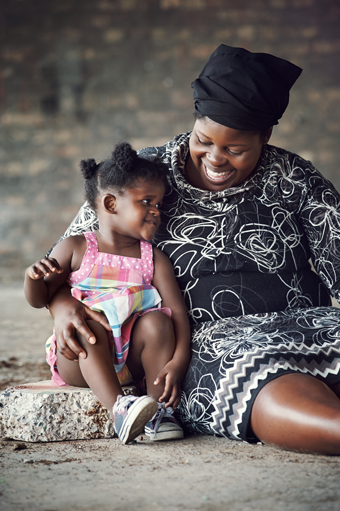Parent InformationCord blood is the blood left over in the umbilical cord and placenta after a baby is born. Typically, the umbilical cord and placenta are thrown away as medical waste. Instead of discarding them as waste, you may also have the option to:
If you are an expectant parent, talk with your health care provider about the options that may be available to you. Donating cord blood for public use or storing it for your family's exclusive use is a personal decision. Click the links below for answers to frequently asked questions:
What is Cord Blood?Cord blood is the blood leftover in the umbilical cord and placenta after your baby is born. It is one of three sources of blood-forming and immune system-forming stem cells used in transplant. The other two sources are bone marrow and the blood that circulates throughout the body (called peripheral blood). Why should I consider saving my baby’s cord blood?Cord blood contains blood-forming stem cells that, when used in a procedure called a stem cell transplant, can rebuild the bone marrow and immune system and save the life of a patient with a serious blood disorder such as leukemia, lymphoma or sickle cell disease. This procedure can also treat patients with inherited genetic disorders, bone marrow failure and immune deficiency diseases.
Cord blood is one of three sources of blood-forming and immune system-forming stem cells used in transplant. The other two sources are bone marrow and the blood that circulates throughout the body (called peripheral blood). Is cord blood transplantation limited to the treatment of blood diseases?Cord blood transplantation is an established treatment for many cancers, blood diseases, as well as metabolic and immune system conditions. In addition, cord blood is being used in a newer area of medicine where research is under way to determine whether components of cord blood can treat other medical conditions such as stroke, diabetes, birth asphyxia (brain damage from lack of oxygen), cerebral palsy and autism. Cord blood therapies for these brain injuries and diseases are not standard medical practice, but are being evaluated in ongoing studies and may prove useful in the future. How is cord blood collected?After your baby is delivered, the umbilical cord is clamped and cut. Blood from the umbilical cord and placenta are collected in a sterile bag with a blood thinner to prevent it from clotting. No blood is taken from your baby. Cord blood collection can be performed after a vaginal or a C-section delivery. The collection procedure is painless and poses no risk to the mother or baby, and does not interfere in any way with your labor or the baby’s delivery. What are the current recommendations for delayed clamping?Several obstetric organizations in the United States, the United Kingdom and Canada have recommended a delay of 30-60 seconds between delivery and umbilical cord clamping in healthy, full-term babies. Research has suggested that delayed clamping may have a beneficial effect in the newborn, particularly in pre-term infants. Delayed clamping can reduce the volume of stem cells remaining in the umbilical cord, but that does not necessarily make the volume unsuitable for storage or donation. On the other hand, if the baby’s cord blood is being stored for a known use – such as transplant of another family member with leukemia – delayed clamping may not be advised. Expectant parents should discuss options for delayed clamping with their obstetrics provider. How can I donate cord blood to a public cord blood bank?Thousands of patients have received a second chance at life because many families around the world have made the generous decision to donate their baby’s cord blood to a public bank. The steps are easy, but they do vary somewhat from country to country. Between the 28th and 34th week of your pregnancy, talk to your obstetrics provider about your interest in donating your baby’s cord blood. Information about donating cord blood in the United States can be found on the Be The Match website that is maintained by the National Marrow Donor Program (NMDP). The website provides donation guidelines and lists U.S. hospitals that collect cord blood for public use. Similar information is also available for many other countries. Unfortunately, not every hospital offers cord blood donation. Is there a fee charged for donating my baby’s cord blood to a public bank?No. There is no fee to donate to a public cord blood bank. Will the patient who uses my baby’s cord blood know my identity?No. The identity of you and your child will be kept confidential. Your baby’s cord blood will be labeled with a number, not your child’s name. How do I save my baby’s cord blood for use only by my family?
You have two options. You can store your baby’s cord blood in a private or family cord blood bank for your family’s future use, should the need arise. Typically, private cord blood banks are not associated with a particular hospital. The mother is sent a collection kit to give to her doctor or other health care provider who will perform the collection at the time of delivery. If your baby currently has a family member with a disease that can potentially be treated with a cord blood transplant, you also may be able to store your baby’s cord blood at little or no cost, depending on the services available where you plan to deliver your baby. This is called a Medical Needs Program or Directed Donation Program. Medical Needs or Directed Donation Programs are often available at both private and public banks. Is there a fee for saving my baby’s cord blood in a private family bank?Yes. Private or family banks charge a fee for the collection, transportation, processing and storage of cord blood. Fees vary from bank to bank and country to country. How do I find a reputable private family cord blood bank?Contact one of the private cord blood banks affiliated with the Cord Blood Association. Additional details about these and other private cord blood banks can be found on the Parent's Guide To Cord Blood Foundation website. In addition, you’ll want to be sure the cord blood bank is accredited by AABB or the Foundation for the Accreditation of Cellular Therapy. These organizations have standards, gather data from banks and conduct on-site inspections to ensure that the cord blood is collected safely, and handled in a way that protects the quality of the cells. What is the likelihood that my baby will use the privately stored cord blood at a later date?
The chance of your baby ever needing his or her own cord blood cells is low, but not zero. For instance, if your child develops a blood cancer like leukemia and needs a stem cell transplant, your child’s own cord blood cells would likely not be used because the cells that caused the disease might be in the child’s cord blood. Donor cells, or sibling cells, may do a better job fighting the disease. However, research is under way to determine whether, in the future, cord blood stem cells can cure other medical problems not currently treated by a cord blood transplant, such as neurologic disorders like Alzheimer's and Parkinson's disease, brain injury from decreased oxygen at birth, autism, and auto-immune diseases such as Crohn's disease, lupus and rheumatoid arthritis. Although these therapies are not yet available as part of standard medical practice, they are being evaluated in ongoing clinical trials and may prove useful in the future. How likely is it that my baby or another family member can use my baby’s stored cord blood?Currently, the likelihood that a baby themselves or a close family member will use your child’s stored cord blood is small, but this may change depending on emerging research and clinical trials. Whether your child’s cord blood can help a family member who needs a transplant depends on several factors. First, while the baby is a perfect genetic match to his/her own stem cells, most often a person will require the use of donor stem cells for a stem cell transplant. However, in newer experimental applications of cord blood, some patients have used their own cord blood or a genetically matched sibling's cord blood. Second, the number of cells in a single collection or “unit” of cord blood must be sufficient for transplant. Adult patients may require more cells than are contained in a single unit. However, techniques are now under used that could expand the number of cells in a cord blood unit, which would increase the number of cells available for a transplant patient. Third, cord blood cells have genetic markers called human leukocyte antigens (HLA) that need to closely match those of the patient. Brothers and sisters with the same biological parents have a 25 percent chance of being a perfect match, and a 50 percent chance of being a partial match. Other extended family members are much less likely to be a match. If there is a child in your family who has a blood cancer like leukemia or an inherited blood disease like thalassemia or sickle cell anemia, consider saving your baby’s cord blood for that child’s future use. You can store it in either a public bank or a private family bank that offers a directed-donation program. You can also consider this option if you’re at risk of conceiving a child with a genetic disorder, like sickle cell disease, that can be treated with a cord blood transplant. Researchers are currently studying whether cord blood cells can help patients with other conditions and diseases such as cerebral palsy, stroke, heart defects, and HIV. Results from these studies may help shed light on whether patients with these disorders can be helped by cord blood stem cells. For more information about searching for clinical trials, see Search for Cord Blood Studies on ClinicalTrials.gov. Can privately stored cord blood later be donated to a public bank?Regulations in most countries do not allow cord blood that has been stored in a family bank to later be donated to a public bank. However, a few countries do allow privately banked cord blood to be used publicly if the family who stored the cord blood unit agrees. Why should I consider saving my baby’s cord tissue?Cord tissue is rich in a different type of stem cells than those found in cord blood, called mesenchymal stem cell (MSC). MSCs are being extensively studied in clinical trials around the world due to their potential to treat a wide range of conditions, including auto-immune diseases and other disorders of the brain and heart. These treatments are currently considered experimental as they are still in clinical trials. Cord tissue can be collected in the same procedure as cord blood. What other uses are there for cord blood?Cord blood contains other potentially valuable cells, aside from those that can rebuild the immune system. These cells can serve as starting material to develop other medicines. When consenting to donate your baby’s cord blood, you may be asked permission to use these cells to develop products that can relieve patients of other illnesses or debilitating conditions. These treatments are currently considered experimental as they are still in clinical trials. Where can I find other information about cord blood banking and transplants?You are invited State of the Science – summary of the uses of cord blood and related birthing tissues in current therapies and in clinical studies. Disease Indications – diseases for which cord blood therapies are currently used, and those in which cord blood use is being studied. Research Advances – banking and therapeutic use of cord blood and related birthing tissues recently reported in the medical literature and at scientific meetings. Clinical Trials Search – online searchable registry that finds current and past cord blood research studies worldwide. Here are some additional trusted sources of information on the web: American Academy of Pediatrics
Return To Top |



